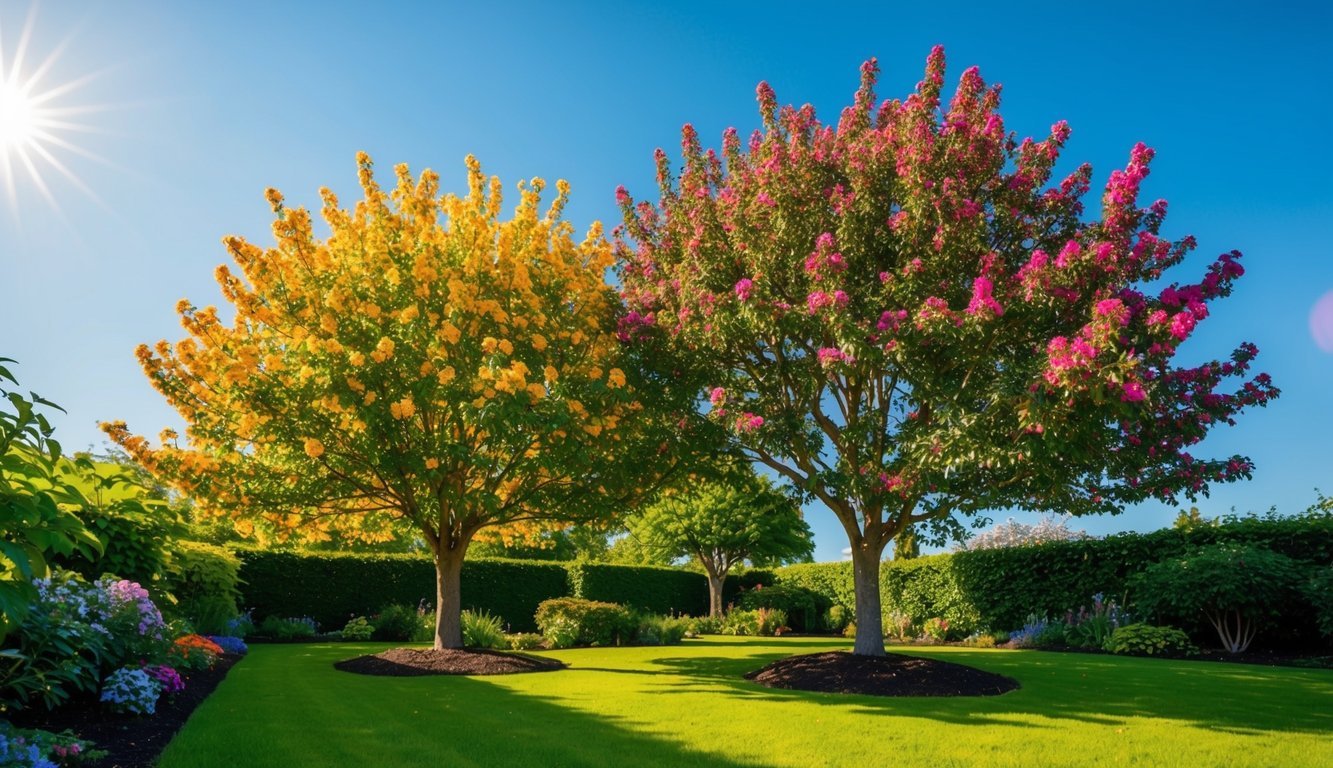
Choosing the Right Flowering Trees
Flowering trees can elevate the charm of your garden, but choosing the wrong type can bring about a myriad of problems—think noxious smells, pest infestations, and fragile branches that break easily.
Since trees are long-term residents in your yard, it’s essential to weigh their potential impact before planting.
We spoke with certified arborists and gathered their insights on common flowering trees to avoid, along with some commendable alternatives.
-
1. Weeping Cherry Tree
Michael Kenins, the founder and CEO of Vista Tree Management, warns against the weeping cherry tree.
While its blooms are breathtaking in the spring, the tree’s beauty doesn’t last long.
It demands extensive care, has a limited lifespan, and is often viewed as overrated.
Throughout most of the year, it doesn’t offer much visual appeal, piles up debris, and can attract pests and various diseases.
Instead, consider planting the Blackhaw viburnum, a small tree that showcases pleasant creamy white flowers in the spring, provides summer berries for birds, and sports vibrant foliage in the fall.
It’s drought-resistant, disease-resistant, and requires minimal pruning.
-
2. Tulip Poplar Tree
Known for its eye-catching yellow flowers, the tulip poplar grows rapidly and can quickly reach great heights, which may cause headaches for homeowners.
Lisa Tadewalt, co-founder of Urban Forest Pro, brings attention to the tree’s tendency to attract aphids.
While these pests aren’t harmful, they can cause sap to drip onto everything below.
As an alternative, Tadewalt suggests the Elizabeth magnolia.
It also produces stunning yellow blooms but remains shorter and doesn’t invite pest problems.
-
3. Southern Magnolia Tree
The Southern magnolia might be better suited for larger spaces than typical backyards.
Kenins points out that it sheds leaves continuously, leading to endless cleaning sessions, and the seed pods contribute to the mess.
One of the biggest concerns is its aggressive root system, which can wreak havoc on driveways and plumbing.
For a more manageable option, consider the fringe tree.
It’s visually appealing throughout the year and adapts well to urban settings.
-
4. Bradford Pear Tree
Though Bradford pear trees are celebrated for their beautiful spring blossoms, they come with numerous headaches.
According to Kenins, these trees emit a foul odor reminiscent of decaying fish, and their brittle branches are prone to breaking during storms.
Plus, they’re invasive and can outcompete local flora.
A better choice? The serviceberry tree.
This lovely alternative features stunning blooms in early spring, followed by vibrant fall foliage, all while being non-invasive.
-
5. Crape Myrtle Trees
Crape myrtles may seem enticing, but they attract pests and create litter problems with their falling flowers, bark, and seed pods.
Kenins warns that excessive pruning can harm these trees.
Instead, why not try the Japanese lilac tree? It thrives with minimal maintenance, is hardy, and is not prone to pest attraction.
-
6. Flowering Cherry Trees
Some varieties of flowering cherry trees come with aggressive root systems that can lift sidewalks and interfere with utility lines.
If you’re drawn to cherry trees, it’s vital to consider space carefully.
Tadewalt recommends the Forest Pansy Redbud instead, which showcases attractive pink-purple blooms during spring while maintaining a less invasive root structure.
Making Informed Choices
By choosing your flowering trees cautiously, you can craft an enchanting landscape while averting potential trouble down the road.
Use these expert recommendations to make informed decisions and enjoy a vibrant and manageable yard!
Source: Marthastewart.com

